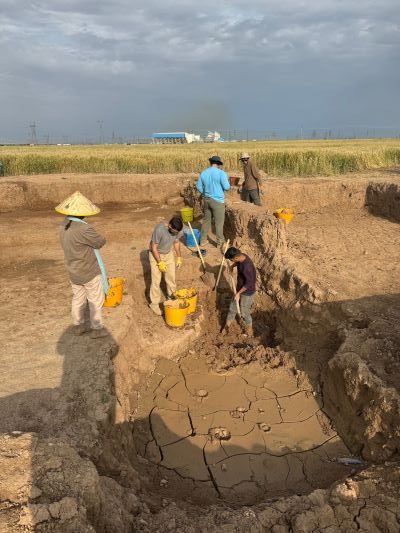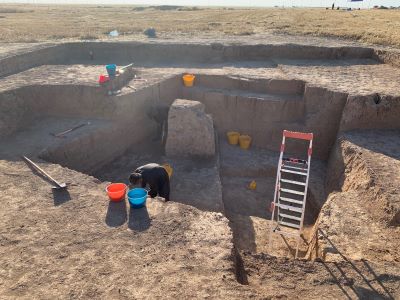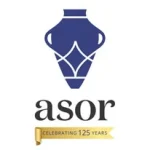
A Short Month in Iraq
Nate Welch, 2024 Steinmetz Fellowship Recipient
The project I was able to join this season is titled “Rural Landscapes of Iron Age Imperial Mesopotamia” or RLIIM for short. The project was spearheaded and directed by Dr. Petra Creamer with the assistant director and my professor being Dr. Kyra Kaercher. These very talented women have been on this project for several seasons prior to my arrival and have an impressive systematic approach to excavating the several trenches held within the site.
I am not an archaeologist but a biologist, however I did learn the importance of proper technique. An example that comes to mind is the pickaxe. The pointed end is preferred as damage will be minimal compared to the blunt crushing end. Archaeology is destructive in nature and cannot easily be undone. That statement rung in my ears the entire time I was in Iraq and knowing that helped me cope with the meticulous digging taking place day in and day out.
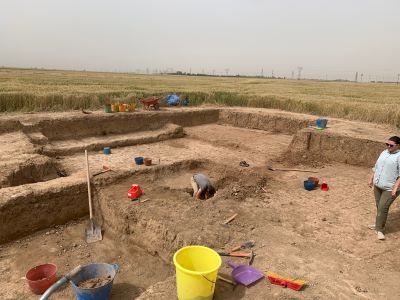
What broke up the monotony of digging was the discovery of ceramic sherds, bone, spindle whorls and various other items. The ceramics were coming up by the bucketful with over 10,000 pieces by the end of the short season. These sherds were then painstakingly cleaned, analyzed and categorized by the team. This was how the majority of the days were spent however my true calling came when the farmers harvested their grain. With the fields cut down we were now able to collect magnetometry data.
I had learned of the process from my professor in my first archaeology course, however I had no hands-on experience until now. Walking with the contraption strapped to a backpack felt almost natural after the first day however I know those who were able to watch from a distance would argue otherwise. The idea was simple, walk back and forth in 20-meter increments for hours while keeping the instrument as steady as possible. The practice was a little more difficult with uneven terrain and spiky vegetation stabbing into your feet and legs all while trying to stay in step with the timer which beeped every time you should have gone one meter exactly. I haven’t even mentioned the fact that there was no shade, and temperatures would be near the 100-degree Fahrenheit mark. With all this in mind the director did an excellent job ensuring nobody would become a casualty of heat illness.
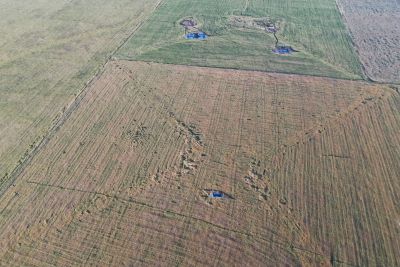
It is appropriate now to confess that I loved every day I got to spend there and all the work that went into the project. My back and knees aching were small prices to pay, and I would gladly do it again. I personally love the busy work that the ceramics and tedious digging provided because physical labor is what I do best. By nature, I am somewhat of an introvert and this opportunity allowed me to step out of my comfort zone and interact with people from all over the world.
I have done this before when I joined the Marines, however I had never been to Iraq, and I can say that my presumptions of the area were entirely incorrect. The people were very friendly, the food was great and there was so much to do and explore such as Shanidar Cave which we were able to tour. I understand I kept this report rather vague, but it sums up the journey quite well and I am the type of person that doesn’t like to disclose too much because it is not my project, and the truly exciting things should come from the director when she publishes her reports.
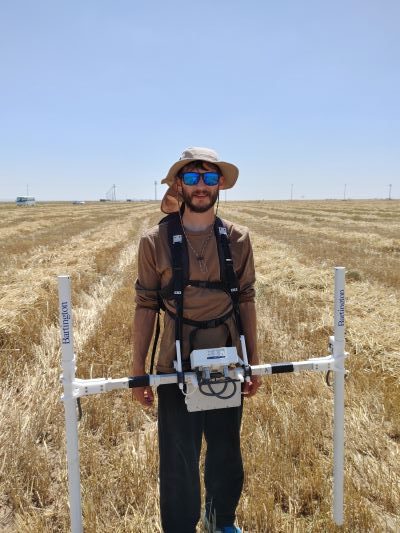
I’ve always been interested in history and tied in with that is archeology which made this experience all the better. I hope more opportunities like this will arise for me, but I fear my dog won’t let me leave so easily next time.
Latest Posts from @ASORResearch
Stay updated with the latest insights, photos, and news by following us on Instagram!
American Society of Overseas Research
The James F. Strange Center
209 Commerce Street
Alexandria, VA 22314
E-mail: info@asor.org
© 2025 ASOR
All rights reserved.
Images licensed under a Creative Commons Attribution-NonCommercial-ShareAlike 4.0 International License
